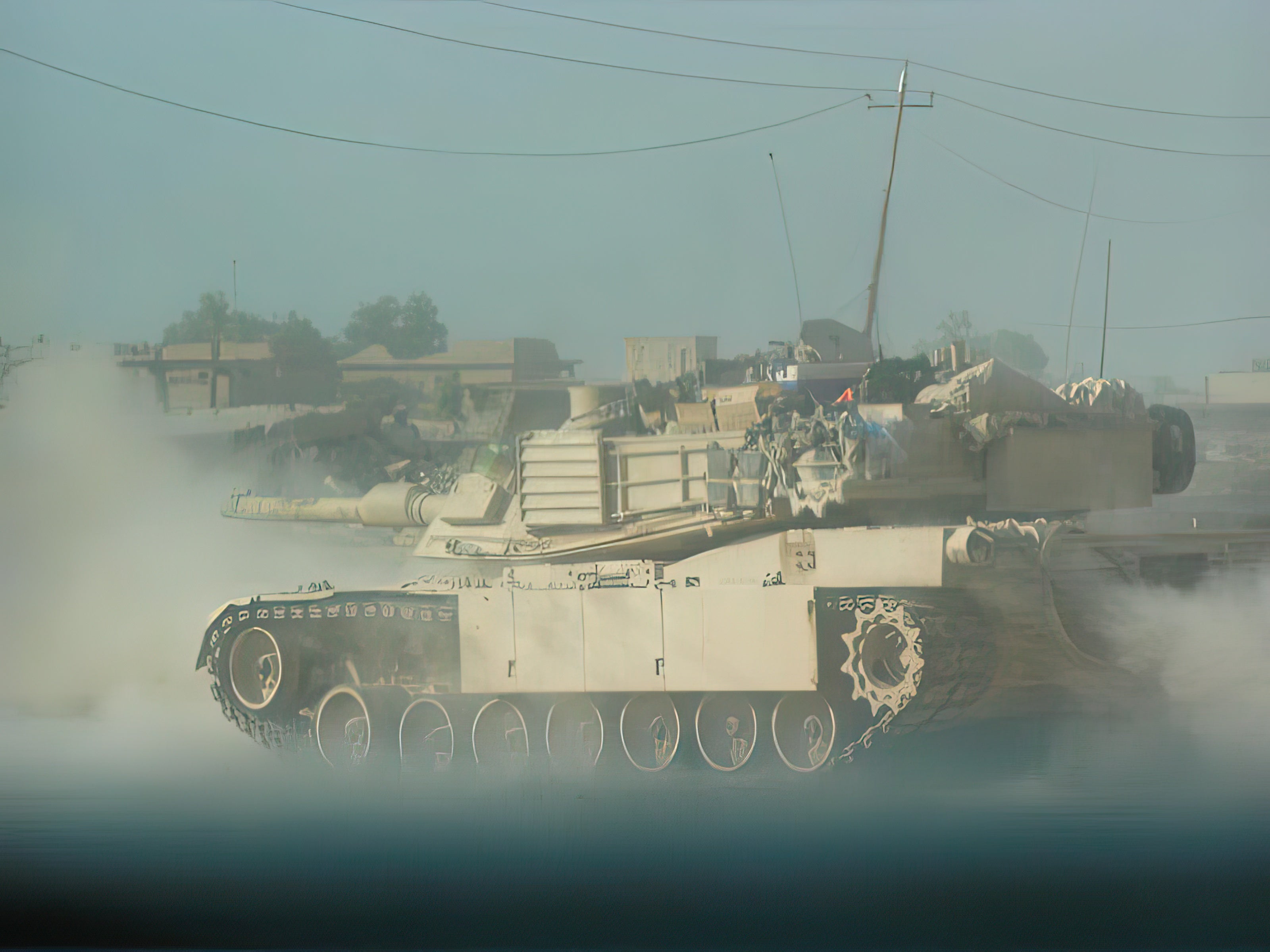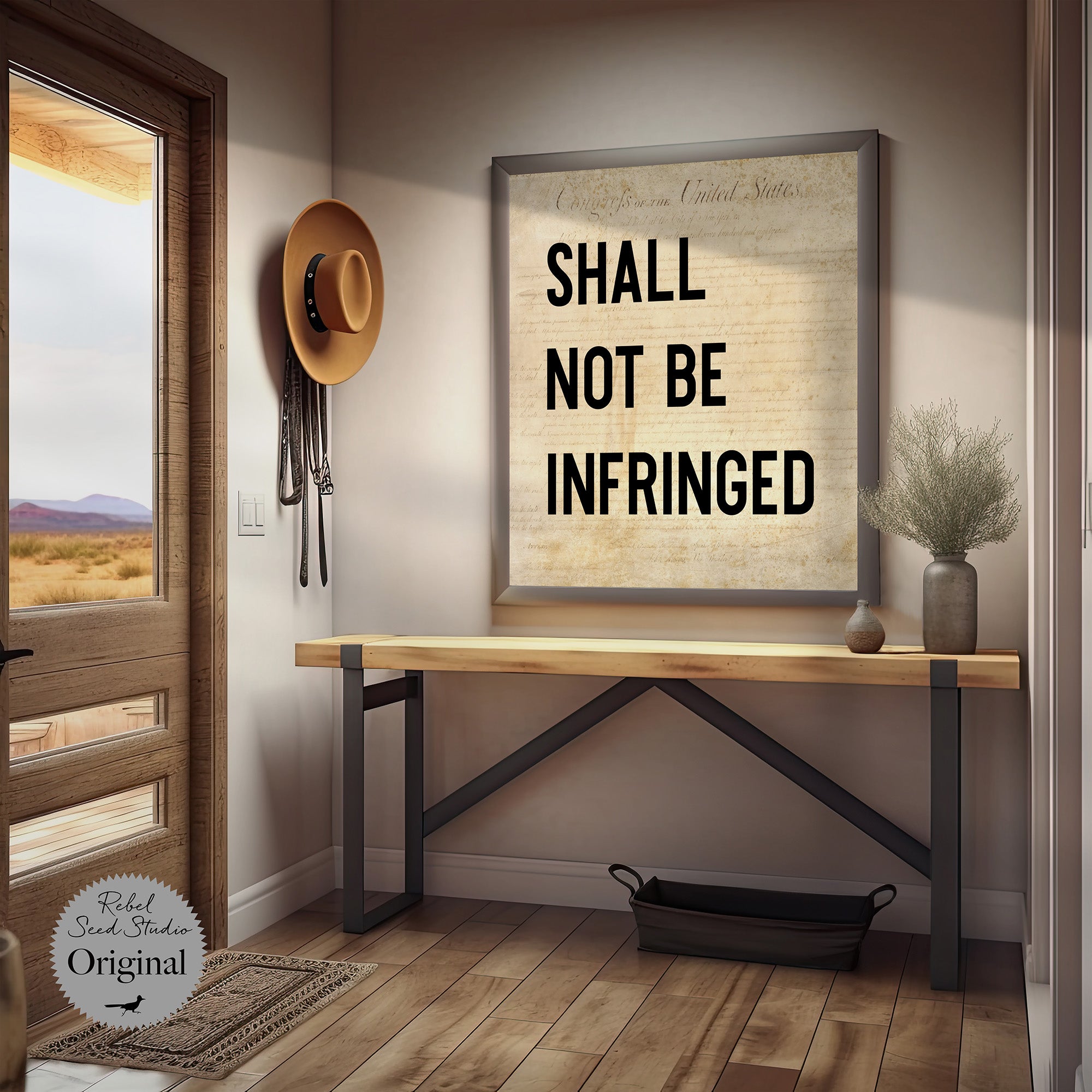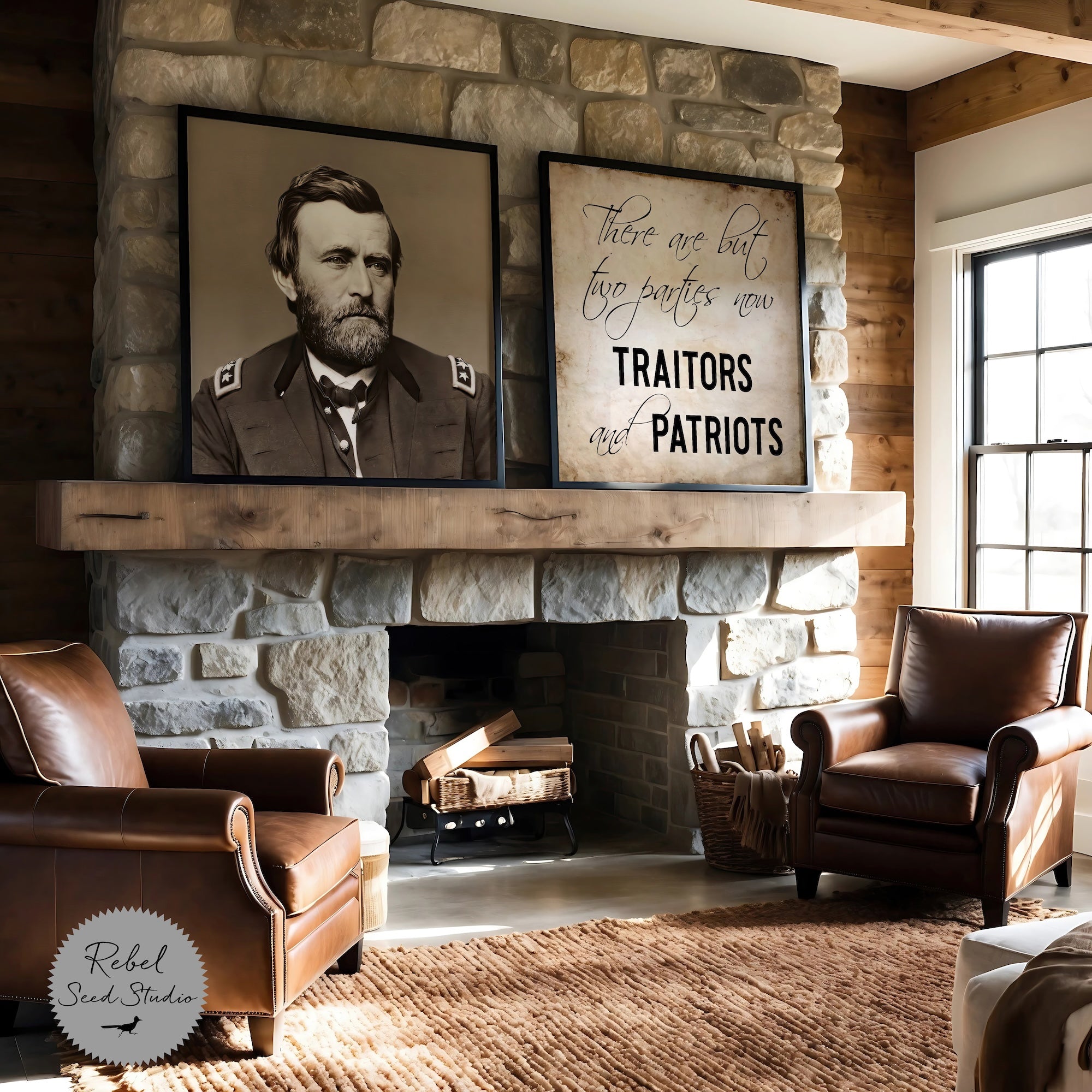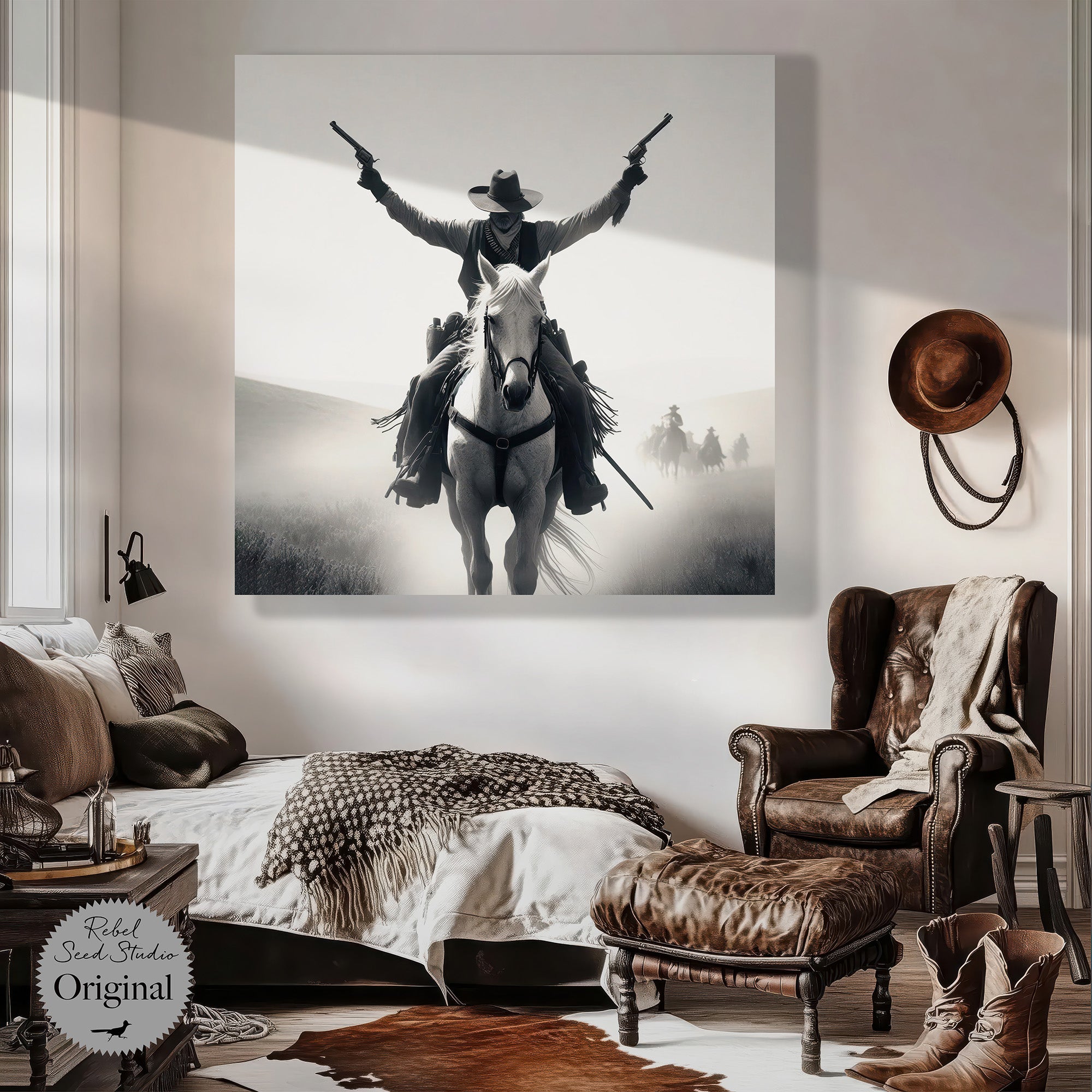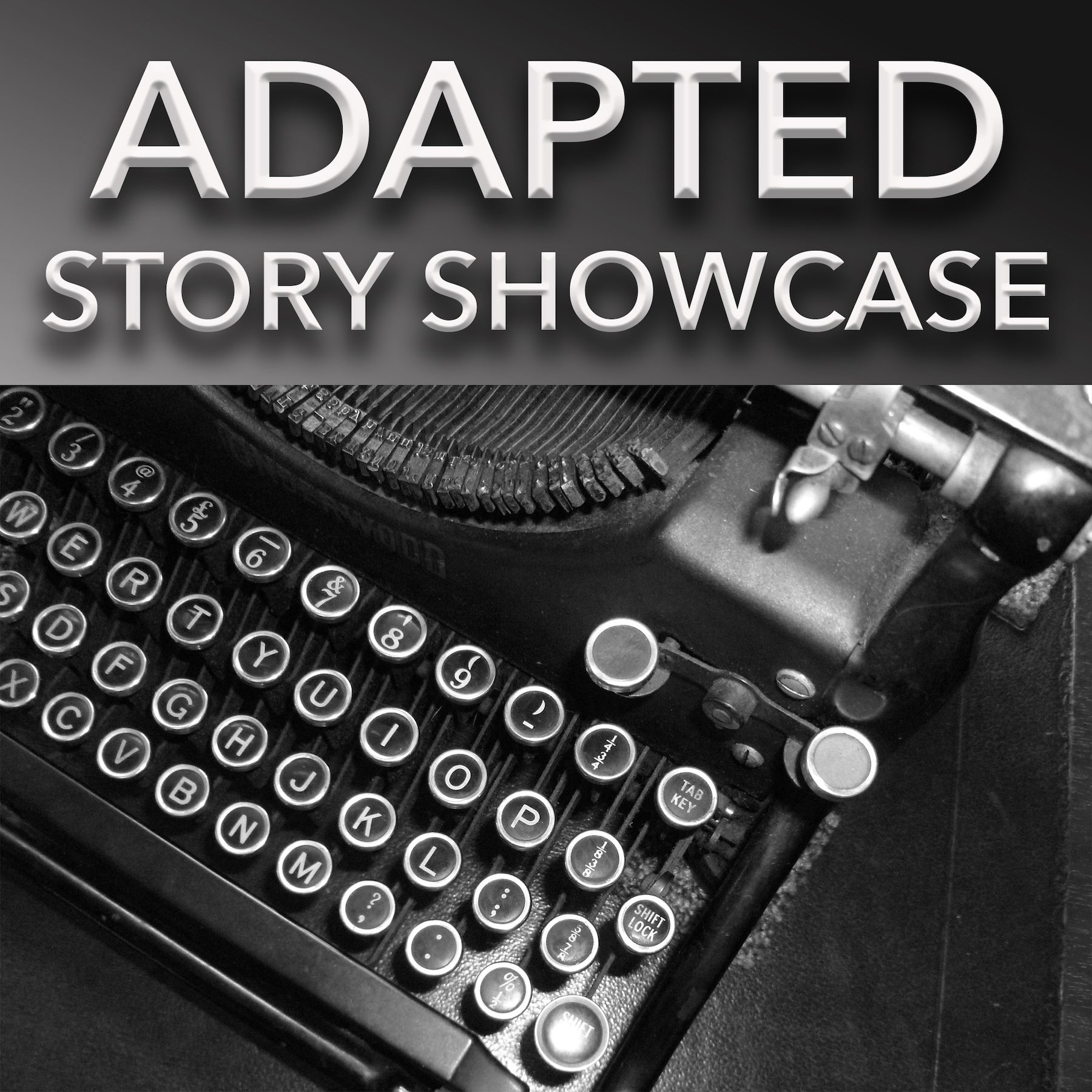
Battlefield Fallujah - Episode 3: Shaping the Battlefield
With the demise of the Fallujah Brigade, military leaders prepare to go back into the city.
Iraqi Prime Minister Allawi worked with General Casey on the timing of an attack on the city. The two considered three windows of opportunity— the last week of September, the second week of November, and the last week of December—that would give American forces at least a two-week block of time to complete the mission. Their planning was based on three overriding considerations: the U.S. elections in early November, the Iraqi national elections, and the Islamic holy period of Ramadan in October were too politically sensitive to start an offensive. In anticipation of an early attack, the MEF stepped up its offensive operations to get the Marines ready for a fight.
Brigadier General Joe Dunford: "It became increasingly obvious for all of us, over the summer, that eventually Fallujah was gonna have to be dealt with. You could see over time that the enemy certainly was consolidating his gains in the city and preparing. I think it was pretty clear to us that we would have to go into Fallujah."
The insurgents were entrenched and emboldened.
Lieutenant Colonel Willard Buhl, commanding officer, 3rd Battalion, 1st Marines: "The intensity increased with IEDs, with indirect fire, we had an event a day, minimum, and often every company was attacked at some place in their area of operations. In the final week, especially as we began to conduct a RIP with the Army units, we brought Bravo 1/4 up to Abu Ghraib Prison. They were attacked right after they arrived. The enemy stepped it up. Audacious attacks. And, they were standing and fighting in a few of these cases, where it all, up to that point, it had almost been always hit and run tactics. We had a couple of sustained engagements."
Lieutenant General John Sattler issued the I MEF attack order to initiate the 1st Division’s planning process. The division’s formal planning for the assault began in the first week of September 2004.
Major General Richard Natonski: "Everything from course of action selection to staff estimates, we had an OPT and we brought in representatives from the wing, from the FSSG, from the regiments, the brigades, so they were all a part of our planning process. Civil Affairs, 4th CAG were there. We had MEF representation, we had Army representation, we had two brigades for Fallujah, and we planned it right here at the Rotunda at Camp Ramadi. We picked our course of action selection, and then we war-gamed it. We asked specifically for two mech-armor battalions from the Army to be part of our two regiments, and the purpose for that was as part of our plan we wanted a penetration into the city. We wanted a rapid penetration to basically disrupt the enemy’s command and control, so that he could not organize his defense."
According to Lieutenant Colonel James Rainey, commander of the 2nd Battalion, 7th Cavalry (2-7 Cav), the initial plan was “a very narrow penetration into the city, along one axis of advance.”
Colonel Mike Shupp was concerned: "Division had the concept that all we should do is a penetration down one avenue of approach. And it, to me, it was a single point of failure. We could not do it."
Rainey came up with another proposal: “A frontal attack on three different roads with a platoon of tanks on each road [moving]... toward Jolan Park on [a] parallel axis... and killing anybody that wants to fight.” His plan was accepted.
As an addition to Natonski’s force, the 2nd Brigade Combat Team of the 1st Cavalry Division (2BCT/1CD) was approved to form a cordon around the city. “The concept,” Col. Michael Formica explained, “was that we would prevent anyone from leaving or reinforcing the city. We would also keep the lines of communication open and prevent indirect fire from hitting the Marine regiments as they were staging for the attack.” His formidable command consisted of 1-5 Cavalry, a mechanized battalion, 1st Battalion, 5th Infantry Regiment (1-5 Infantry) (Stryker), the Alpha Battery from his direct-support battalion, 3-82 FA [Field Artillery] and a couple of radars, the 15th FSB, the forward support battalion, the MP battalion, four aircraft, and the Marine 2nd Force Reconnaissance Battalion.
Captain Jeffrey Beauchamp, U.S. Army officer: "Task Force 2-2 has been operating in country since we’ve been here. However, the organization that we brought to Fallujah was put together as a specific package for Fallujah. It consisted of the battalion headquarters, Headquarters Company with scouts and mortars. They brought one mechanized infantry company, Alpha Company 2-2. And, they brought a Tank Company from Alpha 2-63. And, they also brought the brigade reconnaissance troop, which is the BRT or Fox Troop, 4th U.S. Calvary. We have a total of 650 soldiers, and that includes the companies, the headquarters, and a support element, as well as a platoon of field artillery from 1-6, field artillery, which consists of two M109 Paladins."
Major General Natonski was pleased to get the Army units: "A terrific outfit, they brought an MP battalion, which provided security on the MSR’s. They brought a Striker battalion. They brought a mech infantry battalion, logistics, artillery. They helped provide and secure the area around Fallujah and AO Raleigh, while we were fighting in the city. I never had to worry about my back because I had 2BCT, 1st CAV division watching my back. My focus could be on the city, while I coordinated with 2BCT to make sure they protected our rear, and it worked terrific."
Colonel Mike Shupp felt the same: "Now we had 2nd of the 7th Cavalry who turned out to be an incredible unit. They really were brilliant in the operation. Lieutenant Colonel Jim Rainey was their battalion commander."
Captain Schauble explains the benefits of Force Recon and Task Force HVT: "Being in Task Force HVT gives us freedom of movement. It allows us to pretty much go anywhere and make an impact within a couple hours. And, that's what Force Reconnaissance is trained to do. I mean, most of the guys I have... all of them are NCOs with the exception of one... Sergeants, Corporals, Staff Sergeants... I've got a Gunnery Sergeant and a Platoon Sergeant. These guys all volunteered, twice, to come in the Marine Corps but also to be in Force Recon. They've been through all the schools, which are not easy. And, they have discipline and maturity to operate independently. And, they have a lot of training. This platoon has been through the SOTG Dynamic Assault Package, which gives you direct action capability, working together, live rounds in houses, working in a shooting house. These are the kinds of things that... you know, that contribute to this platoon having a specific skill set, a specific capability to do R&S, to do sniper missions, but also to do direct action. We've done 24 missions since we've been here in two months."
With the addition of the army units and Force Recon, the Fallujah assault force consisted of two Marine regimental combat teams, each with one army and two Marine battalions. Regimental Combat Team 1 (RCT-1) was designated the division’s main effort. Regimental Combat Team 7 was in support of Regimental Combat Team 1. Natonski was also given 850 men of the 1st Battalion of the Black Watch Regiment (U.K.), which road-marched from Basra to work the rat lines from Fallujah into southern Baghdad. The employment of this famous British battalion, whose long history included fighting against the Americans in the Revolution, had to be approved at the highest level of the British government.
Major General Natonski: "When you look at the makeup of the fight in the city, the two regiments that fought in the city were RCT-1, the main effort, and RCT-7. RCT-1 had 3rd Battalion, 1st Marines, and 3rd Battalion, 5th Marines, and 2nd of the 7th CAV. Over on the east side of the city, the RCT-7 had the 1st Battalion, 8th Marines, from the 2nd Marine Division, 1st Battalion, 3rd Marines from the 3rd Marine Division, and 2nd of the 2nd CAV from the 1st Infantry Division. They had tanks from 2nd Tank Battalion, they had engineers, combat engineers from 2nd CEB, and they had AMTRACs from the 2nd AA battalion. Outside the city you had 2 BCT, the Black Jack Brigade, with their Strikers and Mech Infantry and MPs. Also was 2nd Recon Battalion shutting off the escape valve on the south and east side of the city."
Lieutenant General John Sattler: "We had about 45,000 inside the MEF. There were approximately 8,000 soldiers in that 45,000, about 2,500 sailors, and a couple hundred airmen - there were JTACs, and this is just, actually part of it, now. That doesn’t include the airmen that flew up from an F-15s and F-16s, doesn’t include the carrier battle group jets that came on in to support us, doesn’t include some of the other Army assets that they pushed on in, Apaches, et cetera. Doesn’t include all the SOF folks, special operations force folks who we’re working with. When we got prepared to go, we were demanding. We knew we needed someone to shut down the south, and we needed the mobility of someone like the Black Jack Brigade that came from the 1st CAV. So, it wasn’t all about we need to put all Marines in the fight. We were looking at them, and we were saying, we have to have these capabilities from the other services, play everybody to their strength, and play it side by side. Everybody came, everybody got ready to get in the game immediately, participated in the rock drill and the synchronization drill, and there was never ‘you’, ‘they’, it was ‘us’. 'Us' the whole time. When they showed up they just saluted smartly and said, ‘What do you need me to do? Or how violent do you need me to do it?’ And we answered both questions, and they did it side by side with us."
Brigadier General Dennis Hejlik said the sniper teams were critical elements: "Sniper teams are absolutely crucial to the success down there. And we had Army snipers, Marine snipers, and Navy snipers. You know, they really are one shot, one kill."
Six Iraqi battalions were also attached to the Marines for the fight.
Major General Natonski: "In this province, all we had when I got here was the Iraqi National Guard, and the Iraqi police. Because they lived locally to their assignments, they were subject to intimidation. Many Iraqi policemen and National Guardsmen paid with their lives for wearing the uniform of their country. But what happened with the intimidation campaign was, they were really marginalized in terms of effectiveness. So, we did not have an effective Iraqi security force. With the advent and the preparations in Fallujah, we received over 2,000 Iraqi Army and Iraqi Intervention forces, the total of six battalions. Five fought in the city, one fought with 2BCT outside the city. What was special about these, these were Iraqi units that came from outside the Al Anbar province."
The Iraqis were essential for searching culturally sensitive locations.
Brigadier General Hejlik: "We trained them to work at the squad and platoon level with coalition forces. We wanted to use ‘em more than war fight because, at that time, you know, you still couldn’t get a coalition force, soldier, Marine, to go inside of a mosque. So, the intent was to have a bigger force of Schwanis fight alongside their sister battalions in the Marine Corps. They would go into a mosque, the insurgents. Well, normally, we would have to stop. I go with the Schwanis, they would step right out and go in, right into the mosque, and rat out the suspected insurgents and do gunpowder residue tests on ‘em and send ‘em off to be detained at the regimental combat team detention facility."
Unfortunately, according to adviser Captain Brian Mulvihill, a majority of the Iraqis abandoned the battalion prior to the attack: “Sixty percent of the battalion deserted when they heard they were going to Fallujah, which was actually par for the course with any of the units that were told they were going to fight in the city.”
Fortunately, their attrition rate and their skills gradually improved.
Lieutenant General John Sattler: "The five battalions that fought with the two RCTs, the battalion that went up the peninsula and took down the hospital, all came, all stayed, and got better every day."
Colonel Shupp was surprised with the caliber of the Iraqis, particularly after observing the performance of the Fallujah Brigade: "We received two battalions of Iraqi Security Forces. Had no idea about them. 1st and the 4th Battalion, IIF, and a brigade headquarters. And they turned out to be great guys."
Natonski’s guidance to his commanders was the need for speed: "I wanted it to go fast. I felt that the quicker we got in, that penetration was key. If you could outrun the enemy into the city, if you could get in behind them, they wouldn’t stay. They would retreat."
For this reason, the decision was made for the two Army heavy-mechanized battalions to lead the attack with their armor and blow through the insurgent IED crust.
Brigadier General Dunford stressed the IED threat: "The single biggest concern we had was the IED threat that surround the city. That was what we realized, the place where we had the chance to take the most casualties and lose momentum."
The primary activities for the first phase of the operation were collecting intelligence, planning and shaping the battlefield by various means, both kinetic (force of arms) and non-kinetic, moving the forces into position, and building the “iron mountain” (pre-staged supplies, ammunition, and fuel). One of the lessons learned from the first battle was to stockpile essential supplies.
Lieutenant General Sattler: "After the first Fallujah fight, we learned that you had to have your logistics in place, because the enemy was gonna try to break our MSRs, cut them. So, we built the iron mountain. Based on lessons learned earlier, we built an iron mountain of 15 to 20 days of all classes of supply at each of our FOBs before we crossed the line of departure."
During the April battle, the insurgents had heavily targeted the road network and interrupted supply, leaving the division, at one time, with only a two-day stock of fuel.
Brigadier General Dunford: "The enemy virtually shut down the MSRs. They cut off the MSRs all surrounding Fallujah, and they started to shoot indirect fire at our forward operating bases."
The resupply convoys took heavy losses and had to be protected by scarce infantry assets. Major General Richard Kramlich, commanding general First Service Support Group “developed a template of multifunctional combat service support battalions echeloned forward in direct support of RCT-1 and RCT-7.” Marine Service Support Group-31 arrived in Kuwait in early September and started an intense training program focused on convoy procedures and weapons training.
The 1st Service Support Group worked around the clock to build up a supply of “bullets, beans, and bandages,” Marine lexicon for ammunition, food, and medical supplies. The FSSG also provided for the needs of the Iraqi soldiers.
MSSG-31's commander, Lieutenant Colonel James Vohr: "We also are pushing out rations. They subsist on these Halal meals. So, we push those out to ‘em and provide water. We’re also providing medical support to ‘em. They’re treated in the same medical pipeline that any of the U.S. Soldiers are treated in. They come back and they go through Bravo Surgical Company."
In preparation for Operation Phantom Fury 15 days-worth of supplies were built at Camp Fallujah, about four miles outside the city. The "iron mountain" changed the concept of supply delivery.
Brigadier General Dunford: "The FSSG did a great job of sitting down and going down all the items that we would need to have and making sure we had the right amount at the right places. Our distribution plan for supplies was driven by the threat and by that desire not to expose our lines of communication during the operation."
Shaping the Battlefield
Shaping operations is a military term used to describe all lethal and nonlethal activities to influence the enemy commander’s decision by attacking the enemy’s critical vulnerabilities. Objectives include:
- Limiting enemy freedom of action.
- Denying the enemy the capability to concentrate forces.
- Deceiving the enemy as to friendly intentions.
- Destroying enemy capabilities.
- Altering the tempo of operations.
- Gaining and maintaining the momentum.
- Influencing perceptions of the enemy, allies, and noncombatants.
- Acquiring information about the enemy.
Shaping incorporates a wide array of functions and capabilities:
- Direct attack
- Psychological operations
- Electronic warfare
- Deception
- Civil affairs
- Information operations
- Public affairs
- Engineer operations
- Medical services
- Logistics operations
Shaping makes the enemy vulnerable to attack, impedes or diverts his attempts to maneuver, aids friendly force maneuver, and dictates the time and place for decisive action. The objective is to eliminate the enemy’s capability to fight effectively. While the official military term was "shaping the battlefield", some units used another name.
Lieutenant Colonel Buhl: "We don’t use the word ‘shaping’. They have a very un-politically correct term that they used. ‘Ass rape’ is the term they used [interviewer laughs]. Would you like us to ass rape this area?"
Colonel Shupp’s regiment had begun limited offensive operations well before the division issued its planning directive: "The shaping operations started from the day that I first got here with strikes against the enemy. We always looked at it as Fallujah was inevitable."
In one of the first operations, he sent a tank-infantry force against the northeast corner of the city: "We took heavy concentrations of fire against us. If you could imagine a Super Bowl, lights going off, cameras going off in the audience, the small arms fire with MBGs, looked exactly like that."
A series of feints were initiated to gather intelligence, as well as to disguise the true location and timing of the attack.
Lieutenant Colonel Buhl: "We had a series of feints that we launched, Black Bear One and Two. The feints were designed to direct the enemy’s attention to the south of the city."
The operations were effective in gathering tactical intelligence about the enemy. They confirmed several lines of obstacles and fortified lines of resistance containing over 300 well-constructed defensive positions—roadblocks, HESCO barriers, berms, and sniper and fighting pits. Many barriers were laced with IEDs, which were discovered when explosions were observed after artillery fire struck a road block. A line of secondary blasts radiated out from the obstacle.
The layout of the insurgent defenses clearly showed their concern for an attack from the east, especially from the embattled cloverleaf and the areas north and south of it. Intelligence also identified 33 mosques that were being used as meeting places, weapons storage areas, and interrogation and torture centers. The Jolan District in the city’s northeast section was identified as an insurgent stronghold. A reconnaissance team discovered four IEDs on the Brooklyn Bridge.
Major David Morris: "So we went down there. The job was to confirm or deny IEDs on the bridge to see if the bridge was set to blow, and all this was for the eventual Operation Phantom Fury to come down and enter the city. So, we went down to check and see if there were any IEDs at the bridge, [if] the railroad bridge trestle was set to blow, if they had put any type of ordnance on it, what type of OPs they had, basically, their set up around the perimeter of the city. We went in there unscathed. They never even knew we were there. Found that there were four IEDs set on the bridge. There weren't any dedicated type of explosives, besides that, to blow the bridge. There were a few OPs that we found out there. We got in and out of there, and they didn't even know we were there."
The feints and demonstrations intensified after I MEF sent its planning directive to the two regiments.
Colonel Shupp: "We would meet there with local security representatives, which was the chief of police, an actor who was nothing more than a vocal piece for the enemy, for the Muj. And he would come in with one demand: withdraw of all U.S. forces. And he needed more weapons and communication and flak jackets to use for the people in the city, and he wanted to form an emergency response force of 200 and some people, which was just absurd. Because everything that we were giving to him, was falling into the hands of the enemy and we could observe it on ISR. This whole time that we were doing this, we were doing strikes against the enemy."
Major Travis Homiak, operations officer, 2nd Reconnaissance Battalion, conducted a sniper operation against the insurgents in an area known as “Queens,” in the southern district of the city: "We basically task organized all the battalion snipers out there and put them out in various positions on the eastern side of Queens in an attempt to illicit a response from the enemy. We received pretty hefty mortar response from the enemy. Then we went in a few nights later 'cause we’d figured that they saw us moving in. Had some kind of NVG capability ‘cause we went in blacked out. We went in again trying to illicit the same response, getting mortared, but with the express purpose of killing these mortar teams in counter battery fire and supporting arms. So, we set up a complete IR signature basically using fireflies and chem lights to replicate the positions we’ve had the night before."
A three-man team was taken under fire by a machine gun located in a bunker.
Staff Sergeant Christopher Jewell: "I sent over my Bravo element, a three-man team, to go over and check out the south side of the railroad tracks on the northern edge of the city there. We got compromised. We got shot by small-arms fire. And shot at by a machine-gun bunker, and they launched one mortar round at us, at that time. We broke contact, back about 600-meters to the north. Everyone was okay. And we used supporting arms and we just blew the shit out of the machine-gun bunker and people that were shooting at us. Now we called a Cobra in. Cobra came in. We cleared and brought on the particular building where the observer was observing us, and we destroyed that target as well, and we pulled back for extract."
While the reconnaissance teams worked at ground level, UAVs (unmanned aerial vehicles or drones) flew overhead, identifying insurgent command centers, storage areas, barriers, and defensive positions. With their electro-optical and infrared cameras, the UAVs provided real-time intelligence around the clock.
Major Andrew Hesterman, RCT-7s Air Officer claimed that the UAVs were essential in identifying hostile action or proving hostile intent so that the target could be engaged: "A majority of our shaping targets that we did hit were based on Scan Eagle, Pioneer, a little bit the Predator, not as much... being able to break out a weapon, meeting that hostile intent hostile act criteria before we could engage."
During Operation Phantom Fury, the Marines and Army used four UAV systems: the RQ-2 Pioneer, Dragon Eye, Scan Eagle, and RQ-11 Raven.
Captain Jeff McCormack, intelligence officer, 3rd Battalion, 1st Marines, reported that before the assault, they maintained continuous coverage over their battle space: "The day prior, probably on of the best things we did was we went out just north of Mobile, just north of Fallujah about four clicks and we used our Dragon Eye, and we flew our Dragon Eye over what was going to be our breech lane and our portion of Fallujah. We recorded it all on an 8 mm tape that came back here and then the Ops O gave the battalion order over a map inside the conference room. And, immediately following, we shut the lights off and played the tape for everybody to see. So, they got to see what the city looked like, the people on the roads, you know, [where] cars were and everything. Multiple companies took that and showed it to their companies in the chow hall. And then, that night, we turned it over to 2/7 CAV 'cause 2/7 CAV was actually going to be leading us initially and they used it for their planning. So, it was great."
Colonel Shupp: "One of our most successful people for engaging the enemy was a corporal in our Two section, who was just an expert at using Scan Eagle. And he would just find the enemy. And based on his finding the enemy, we would strike the enemy. That team that we had, they were just taking apart the enemy bit by bit. Corporal Greenfield was the young Marine, he was great - very, very successful in setting up packages."
As the Army and Marines used the UAVs to spot targets, it didn’t take the insurgents long to figure out what those noisy, slow-moving aircraft were.
Captain Jeff McCormack: "We ended up losing a couple of Dragon Eye’s got shot down from the enemy. I think we lost a total of three Dragon Eyes during that time frame."
Lieutenant Colonel Buhl: "The Dragon Eye was one of the most tremendous force multipliers. And, we had Major Foster out from War Fighting Lab, Dominic Foster, who became sort of a volunteer UAV officer for us. He brought a few extra, and he knew how to repair them [interviewer: "wow"]. We had almost constant Dragon Eye coverage. At the tail end of the high intensity combat, we were down to two serviceable platforms. We had a number shot down. You know, a number crashed, and they just slowly, but surely broke and were cannibalized, etc."
Major Hesterman related a UAV incident that occurred during the battle: "A particular mosque... it's a very large mosque... and, as one of 1/8's companies got within small-arms range, they were starting to get sniped. And, it took 'em, I don't know, a couple hours to figure out it was coming from one of the minarets. And, they'd finally figured out that what the insurgents had done was chipped out the dark colored tiles and the dark colored bricks in the minarets. So, they weren't on the windows. They weren't on the little platforms on the minarets. They had, in essence, made little camouflaged gun slots and they're sniping 'em. So, we decided, 'Well, we gotta knock over the minaret.' And, through laser-guided weapons, having Scan Eagle overhead, talking to the FAC on the radio, seeing the image of the Scan Eagle, and talking to the aircraft, we were able to talk him onto the individual point on the ground to hit with a 500-pound bomb to do minimal damage to the mosque and knock the minaret off. And, it worked like a champ."
On November 6, as parting of shaping the battlefield, Force Recon was tasked with eliminating the IEDs that were located on the bridge. Staff Sergeant Jewell: "They particularly wanted those IEDs that we found on the bridge the first time. My team did a bridge report. They wanted them blown so that they could use that bridge for MEDEVAC and CASEVAC, and things like that. And, basically, use that bridge as supply line, high-speed avenue of approach into the northern end of the city. We sent all the teams up. We're all lined west of that bridge, pulling R&S and sniper op. My team had gone up and we disposed of one of the IEDs that was on the bridge. We pulled it off the bridge, and we blew it in place. There was still one IED left on the bridge. It was a high-risk of compromise, and it was just... we couldn't get up on the bridge, and we'd already been compromised up there once, and we didn't want to get an early Christmas present and have that damn IED blow up in our face. So, we didn't attempt it. I would assume EOD came in and took care of that once the attack launched."
Shaping also involves Information Operations. Ever mindful of the information-operations failure during the first attack on Fallujah, this time, the media was brought in early.
Lieutenant General Sattler was pleased: "We realized that even when we bombed targets during the shaping phase, whatever target we hit, even though we did positive identification, we did the collateral damage bug splats to make sure there wouldn’t be collateral damage to noncombatants, and we de-conflicted friendly forces. When we dropped the bomb, it didn’t matter, if we watched it hit and we knew who we killed, and we knew what collateral damage was done, the next day there was gonna be a press release, or an IO campaign, coming out from the insurgents that would show, we killed women, we killed children, we killed elderly men - 65 and older. And there would always be back-up or, we call, B-Roll pictures of hospitals with children, women, and old men in it as they talked about who we had bombed. And 'They never killed any insurgents, never killed any of Zarqawi’s network', it was always a standard thing. And, then we would try to rebut that thing. Well, we figured out that he who throws the first punch, and knocks the other one on the canvas, the guy getting up off the canvas, even if you have the moral, legal high ground, you’re not gonna win, because you’re trying to put a genie back in the bottle - much harder than letting the genie out of the bottle.
They almost shut down our targeting at night. We would always be questioned of, 'I don’t know if we can accept another blast in the international media, coming out from the thugs, because they got it out first.' You would see on the CNN ticker tape, or on Reuters, or on Fox, or whomever. I was going to press conferences and they would say, ‘Well you bombed. You know, you indiscriminately bombed.’ And I’d say, ‘Stop. We have never indiscriminately bombed. Every bomb that we have dropped has been a precision munition. Not one armed bombed was dropped during the whole fight, the workup or the campaign.’ Transparency works well. Embedded media—tell the story. They’re gonna tell the good, the bad, and the ugly. And you can’t censor the ugly, or then you’re no longer perceived transparent. If we start to embargo things that we don’t like, then the word transparency no longer applies to our embeds. In other words, 'You can come on in and be an embed, we’ll take a look at what your gonna print, and then we’ll let the good stuff go.' Well then, we’ve just lost the full reason for doing embeds."
Major General Natonski: "One thing that the MEF wanted to ensure was that the media that were embedded were embedded before the fight, so they had a few days to get to know the unit. Then when they went in the city, they stayed with that unit. Now, if they wanted to leave, they could leave but then they wouldn’t come back. So, they made a commitment to stay with those units. I think that the media demonstrated to the world that we are the most potent fighting force on the face of the earth."
Lieutenant General Sattler invited senior national security correspondent for ABC News, Martha Raddatz, to participate: "I worked it with General Metz, my boss, and said, ‘Look, let’s bring in somebody who has tremendous credibility, who is not pro or con, but has been very balanced. And, let’s bring them in and show ‘em the whole targeting procedure. Show ‘em how we build targeting orders, when the positive identification and the criteria that we’ve established for that particular target’s met, how we clear it, and how we strike it. So, we brought her in and brought her into the COC and she actually showed it on Nightline. She did NPR, and she showed some of that footage and talked about it on national T.V."
Shaping also included disseminating information to the civilians in Fallujah about the upcoming attack.
Major General Natonski: "In terms of information operations, part of that was to tell the Iraqi people what we were doing, and make sure that the people in the local area understood that we were going into Fallujah not to destroy the city but to destroy the insurgents so that we could give the city back to the people. The people in that city lived in fear. Anyone suspected of collaborating with the coalition forces could find themselves executed in that city. And, in some cases, there were innocent Iraqis that were executed."
Leaflets were dropped into the city informing residents of the benefits of eliminating the insurgents, and advising citizens to leave Fallujah prior to the attack.
Major General Natonski: "We were dropping leaflets. Leaflets that tried to drive a wedge between the insurgents and the people that were the residents. We knew that the residents of Fallujah were just innocent victims of the insurgents. When I say insurgents - the whole gamut. You have former regime elements, you had criminals, but you also had a lot of foreign fighters from all over the Islamic world. We would drop leaflets that would tell the people of Fallujah that you would have had a water treatment plant this month except that your city is full of insurgents. And, you know, we tried to explain what they were missing because of the insurgents, the presence of the insurgents. Just prior to the attack we made sure that leaflet drops and radio broadcasts that the people that were in the city, fortunately for us most of the people left the city, they knew the fight was coming."
Produced and narrated by Laura Cross
Based on the book Operation Phantom Fury: The Assault and Capture of Fallujah, Iraq by Colonel Dick Camp
Special thanks is given to the Department of Defense.
Grateful acknowledgement is made to the U.S. Marine Corps for historical interviews.
Warriors featured in this episode:
Captain Jeffrey Beauchamp, U.S. Army
Lieutenant Colonel Willard Buhl, USMC
Brigadier General Joseph "Joe" Dunford, USMC
Brigadier General Dennis Hejlik, USMC
Major Andrew Hesterman, USMC
Major Travis Homiak, USMC
Staff Sergeant Christopher Jewell, USMC
Captain Jeff McCormack, USMC
Major David Morris, USMC
Captain Brian Mulvihill, USMC
Major General Richard "Rich" Natonski, USMC
Lieutenant General John Sattler, USMC
Captain Jason Schauble, USMC
Colonel Michael "Mike" Shupp, USMC
Lieutenant Colonel James Vohr, USMC
Interviewers: Dr. Fred Allison, Lieutenant Colonel Dr. Ken Estes, Chief Warrant Officer William Hutson, Lieutenant Colonel John Way, Captain Joe Winslow, Master Sergeant Robert Yarnell


